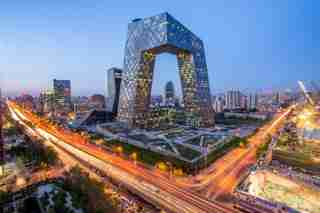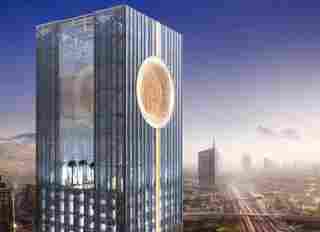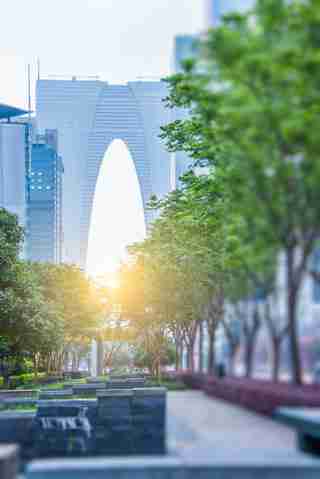For much of modern history, skyscrapers were merely very tall structures with wholly uniform façades. Yet over time architects began to manipulate the exteriors, sometimes removing entire sections altogether. Not only do buildings with holes in them offer city dwellers bold new forms to admire from the outside, but tenants within can enjoy sources of light that more traditional skyscrapers preclude. From an OMA-designed science center in Hamburg to a tower by Zaha Hadid in Dubai, AD looks at the most daring examples of buildings that celebrate the void.

CCTV Tower (Beijing)
Designed in 2008 by Rem Koolhaas and Ole Scheeren, the CCTV Tower in Beijing has become an icon in the city's bustling business district.

Marina 106 (Dubai)
Designed by UAE-based National Engineering Bureau and set to be completed in 2019, Dubai’s Marina 106 will be a luxury residential skyscraper that stretches 1,460 feet into the sky. The tower features a long vertical line on two of its sides, guiding the eye up toward larges holes at the top of the structure.

The Gate of the East (Suzhou, China)
The 990-foot-high Gate of the East is the tallest structure in the eastern Chinese city of Suzhou. Designed by U.K.-based firm RMJM and completed in 2014, the building was meant to symbolize a gateway to the city, welcoming people to a new and modern China.
The Mirador (Madrid)
Designed by Dutch firm MVRDV, the Mirador in Madrid is a collection of several types of units stacked together into a modular form. The residential structure includes a garden for its occupants and boasts splendid views of the nearby Guadarrama Mountains.
Hamburg Science Center (Hamburg)
Designed by venerable architecture firm OMA, the as-yet-unrealized Hamburg Science Center would be constructed of ten modular blocks.
Opus Office Tower (Dubai)
Designed by the late Zaha Hadid , the Opus Office Tower in Dubai will house apartment units and a hotel when the structure is completed later this decade. The holistic building includes the signature curves that made the Iraqi-born architect one of the most recognized in the world.
The Umeda Sky Building (Osaka, Japan)
Designed by Japanese architect Hiroshi Hara, the Umeda Sky Building is arguably the most recognizable landmark in Osaka, Japan. Completed in 1993, the structure features an observation deck at the top, which takes the shape of ring, hoisted nearly 600 feet in the air.
Feng Shui Skyscrapers (Hong Kong)
Hong Kong is known for its legendary skyline, but perhaps nowhere is that more evident in the boldly-designed Feng Shui Skyscrapers. Located next to Repulse Bay, the aptly named structure is rooted in the ancient Chinese philosophy of positioning objects in harmony with nature for the ultimate purpose of influencing the prosperity of the homeowner.
